Jumping Spiders are by far the most prevalent group of spiders on our planet, with over 6200 different species and many species can be found in tropical forests. Most of these spiders live close to human populations and also in a variety of dwellings all over the world. In fact, the only two places where you’re likely not to encounter jumping spiders are the North and South poles. They have remarkably good vision due to their 4 pairs of eyes and one of them is Hyllus giganteus who is a Giant Jumping Spider of “Salticidae” family. From jumping ability to their eyesight, you can discover here more fantastic facts about Hyllus Giganteus.
1Giant Jumping Spider Belongs To Salticidae Family Which Has Described 6000+ Spider Species
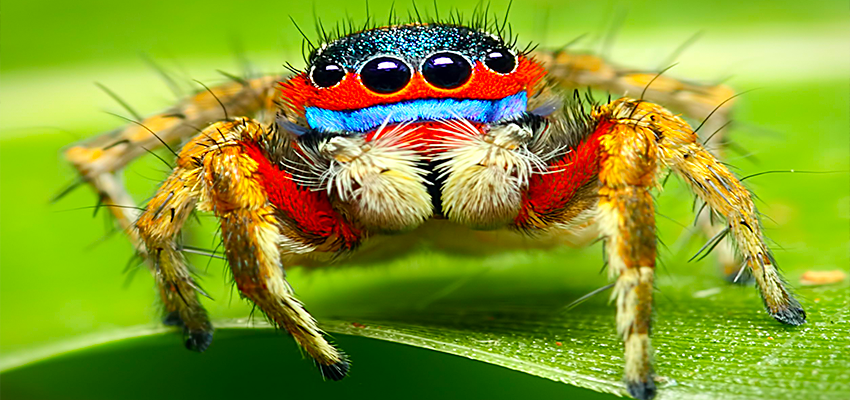
The Giant Jumping spider (Hyllus giganteus) is a part of the Salticidae family, and is not an exaggeration to say that, in a group reconciliation, you may require to provide quite a large room for all the members. Giant Jumping Spider is one of the most diverse types of arachnids and there are a total of 646 jumping spiders that have been recognized in their current form and fossilized genera and over 6,200 species that have been identified.
From vibrant colors to various forms and even sizes, these arachnids are an array of beauty. It is estimated that this Giant Jumping Spider (Hyllus Giganteus) dominates the world of spiders when it comes to size.
2Hyllus giganteus Are Capable Of Performing Vertical Jumps Up To 50 Times To Their Own Body Length
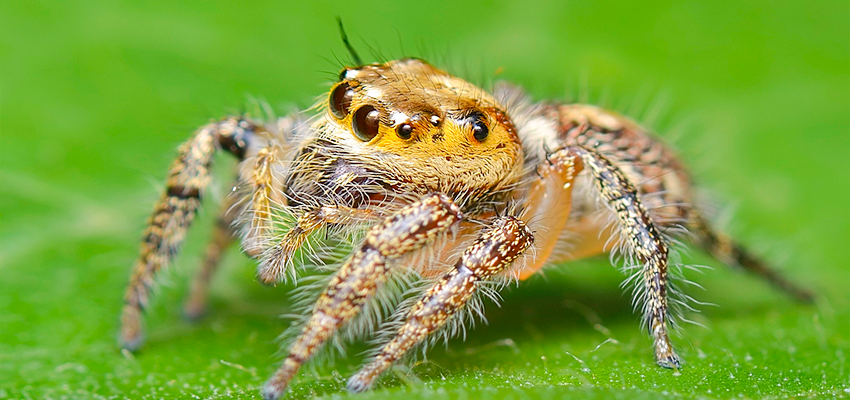
Despite its tiny stature, Hyllus giganteus Spider is incredibly athletic. With very muscular legs, This Giant Jumping spider can make vertical jumps up to 50 times its own body length. This extreme jumping ability is not all they possess, however, because they also have segmented legs that let the muscles expand and contract in order to use it’s blood pumping.
When Hyllus giganteus is about to jump, it contracts muscles in the higher part of its body and causes an rearward variation in hemolymph pressure which prompts the animal’s legs to prepare them for the leap. In order to make a bigger jump, a jumping spider has to extend its legs quickly and suddenly in order to propel itself forward. When it does so, the force of impact forces blood back into its legs and sets this up for larger leaps in the direction it is targeting.
3Hyllus Giganteus Uses Silk Anchor For Smoother Landing

Whether The Giant Jumping spider (Hyllus giganteus) avoid predators or only trying to get from place to place, it uses a very different method of transport. This Jumping spider spins a thread of silk as a way to escape on the ground. Although this jumping spider leapt so high, this may not seem as strong as the giant hylobates and it wants to die. Hyllus giganteus makes a quick web line that allows it to use draglines for speed and accuracy. This spider uses the tension of the silk line to adjust its body and make a smooth landing. Something that silk lines give spiders is a stroke of luck. This is because the weak spots in the web are concealed and it’s rare for any prey to find its way into the silk line. This can also provide direction and allow Hyllus to control his landing safely with a net of death.
4Hyllus Giganteus Doesn’t Use Webs To Hunt
A Giant Jumping Spider can accurately jump surprisingly far in order to catch its prey. Jumping spiders are fast and agile spiders that typically use their legs to stalk their prey and then pounce on their meal with a quick bite using toxic glands in their chelicerae.
Jumping spiders hunt during the day in general, which is consistent with their developed visual systems. When looking for prey, a jumping spider typically begins by turning their cephalothorax to bring the left and right eyes on a target until it exists within range of capture. It then rolls up its abdomen to show its head and shoulders, turning to face front. It might spend some time examining the thing it’s looking at and determining whether it worth its effort to hunt it down, before moving silently forward. Once within range, it connects a dragline and jumps onto the prey.
5Hyllus Giganteus Has Sharper Eyesight
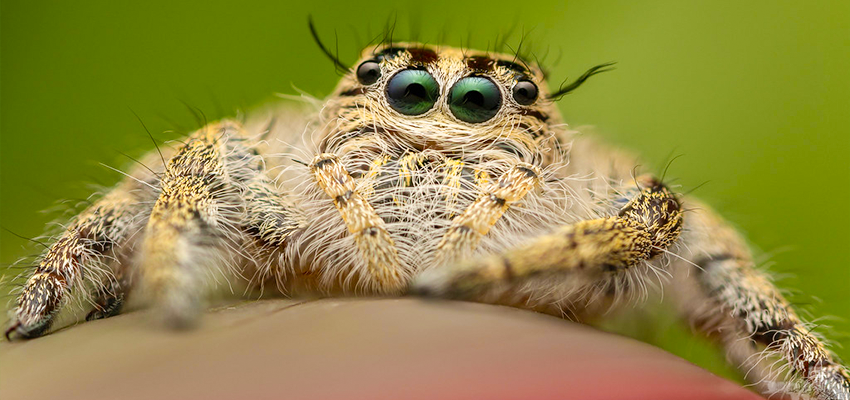
Giant Jumping Spider (Hyllus giganteus) has a very weird eye dispensation: four smaller eyes split in half horizontally, the smaller eyes are on the left and right of their heads with four large eyes in the middle. But it’s their eight large eyes that make them capable of seeing so well.
The spider’s separate, smaller eyes give an expanded angle-view with a high horizontal and vertical field of vision and also allow them to sense motion better than any animal. The spider’s central, primary eyes have the best color acuity of any eardrum-sized animal while it also has a wider field of view than other similar sized animals, making them excellent hunters. It is possible for Hyllus giganteus, a giant jumping spider to look around without moving their head independently as well. As an added benefit, the retina muscles can swivel on their own, allowing it to see its surroundings with a 360 degree view and keep it from getting tired so the spider has more energy.
6They Have Sensory Hairs To Feel Sound Waves
However, This Giant Jumping Spider doesn’t have ears or ear drums but also has great hearing sensitivity. Instead, their bodies are equipped with sensory hairs that pick up vibrations in sound waves. The signal is then sent messages to the brain via this process or the nervous system. This rare discovery was made in 2016, when researchers were studying the spider’s eye. The researchers found that vibrations sent by sound waves awakened the spiders’ neurons, even vibrations that generated more than 10 feet away. This led them to conclude that the spiders could feel the sound waves, even if they weren’t biologically generated.
7The Males Sing And Make Dance Movements To Attract Female Partner
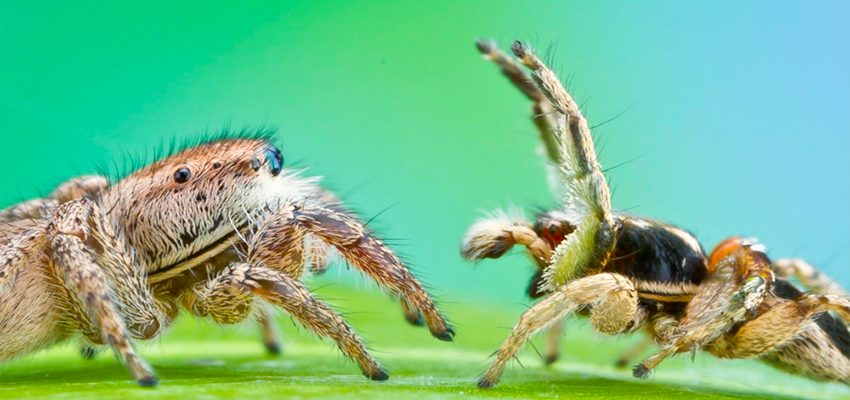
As Giant Jumping Spider’s different or excellent sensory systems help them hunt and avoid injury, those same senses are helpful in mating. A male spider dances his way into a female’s heart, using different movements and creating sounds that can attract attention. Each male spider also uses its own unique song, which sends vibrations to nearby female spiders as well.
Communication between a male and female spider is determined through vibrations on the ground. Female spiders receive vibrations from the ground that travel up into the spider’s legs, where they are then picked up by sensory hairs. If a female doesn’t like what she hears, she can kill the male spider.
8They Can Be Trained To Jump On Command
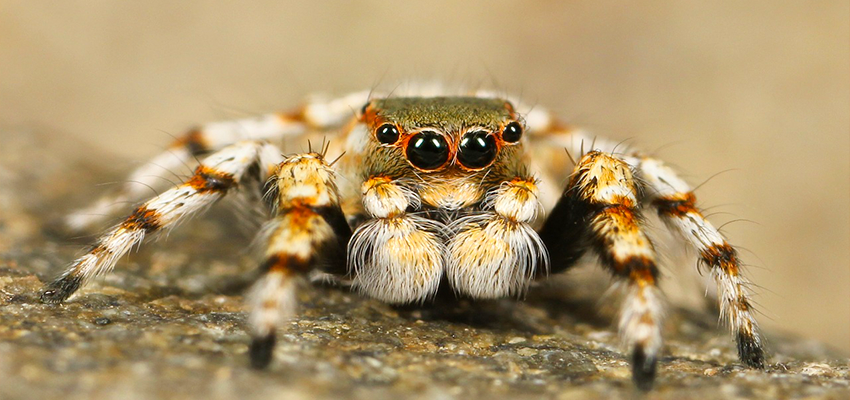
Scientists at the University of Manchester trained a “Kim” jumping spider to jump with their commands with leap sensors, rather than visual cues, to better comprehend the species’ jumping capabilities. They also tracked its movements and how it responded to gravity and disturbances. The behavior of jumping spiders can be explained by the use of sensory input from the eyes and the leg joints to produce force during jumps. They filmed Kim, otherwise known as the spider, and their jumping techniques. They looked at their abilities from a close range perspective, like when she was jumping. This method uses more energy giving less flight time, but will improve the odds of capturing a target. By understanding what insights the jumping skills of tiny robots can be improved with, scientists hope to use this technique in the future.
9Giant Jumping Spiders Are Inhabitant From The Region Of Sumatra To Australia
Even though they are widely distributed around the world, jumping spiders can only be found in dark places. Although they live in every type of habitat on Earth, there is no place on Earth where you won’t be near a jumping spider, except high polar regions. All you need to do is venture to Antarctica or the Arctic and you’ll be safe from them. Jumping spiders are native to tropical areas, but sometimes they can also be found in cooler areas. But this Giant Jumping Spider (Hyllus Giganteus) can be found only from Sumatra to Australia regions.
10You Can Pet A Giant Jumping Spider
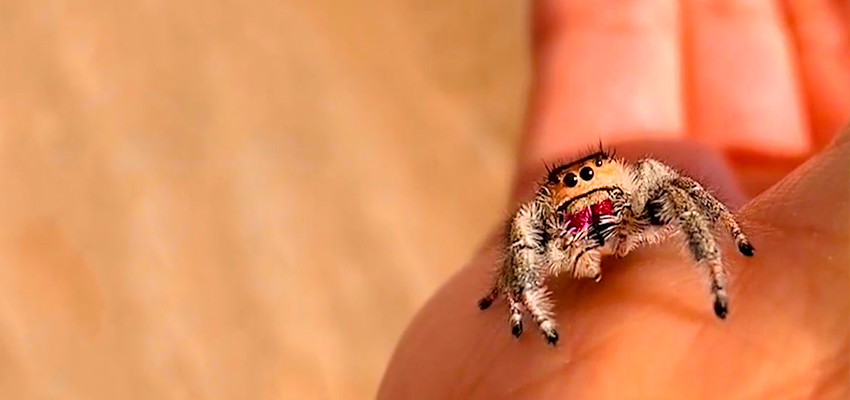
Introducing a jumping spider as a pet can be really enjoyable. Jumping spiders have their own individual personalities, so you will appreciate the added traits of each spider and they’ll love you for interacting with them. Some may be shy and skittish, while others seem more calm but when a spider is calm and observant of you, it’s easy to see how much character the animal has.
Jumping spiders have been scientifically proven to be one of the highly intelligent species around all over the world. It will not only be interesting for you to watch their behavior, but also for the jumping spider to observe you wandering around your home. And all Temperaments are the same for Giant Jumping Spider (Hyllus Giganteus), this will make a good companion because it is also one of the friendly spider genus.
11Hyllus Giganteus Can Be 0.98 Inches (2.5 centimeters) In Length
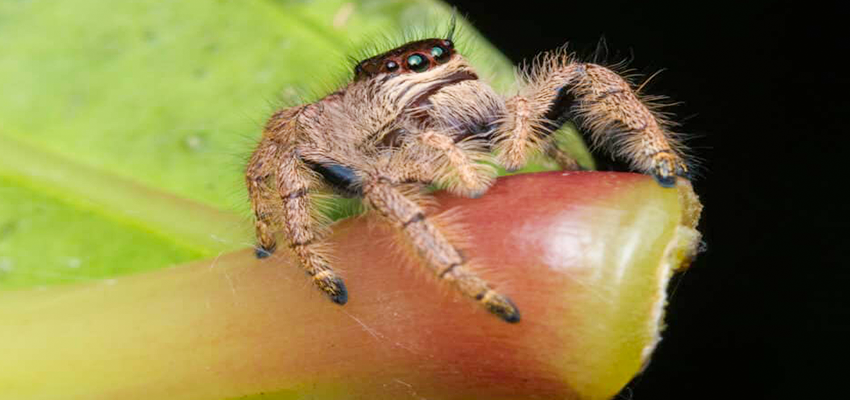
These spiders are the largest species of Jumping Spider. The unique color of this jumping spider and its large size is what initially draws you in. If you ever come across such a beautiful little spider, you’ll stop to take a closer look at it and realize how captivating these jumping spiders can actually be and finally you’ll instantly be drawn to it. The Hyllus Giganteus is one of the most colossal species of jumping spiders, with a size comparable to other arachnids.
The regal jumping spider is smaller than the Hyllus Giganteus, but still poses an intimidating presence among its peers. Hyllus Giganteus can grow up to big size to other compact jumping spiders that are ranging between 1.8 to 2.5 centimeters (0.71–0.98 in) long. The females are bigger than male spiders, like most other types of jumping spiders.
12Carl Ludwig Koch Was The First To Discover The Giant Jumping Spider

The Giant Jumping Spider can also move quickly through the air, using its eight Legs to leap from tree to tree. Carl Ludwig Koch discovered the Giant Jumping Spider (Hyllus Giganteus) firstly in 1846 and wrote about it in his co-written book The Arachnids: and was one of the first likely spiders to be pictured and described similarly to how they are found in nature.